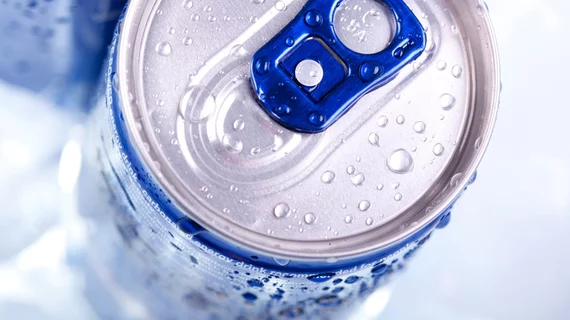Added sugar labeling on foods, drinks could save US $31B in healthcare costs
The FDA’s decision to mandate labeling of added sugar content on packaged foods and beverages is estimated to prevent nearly 1 million cases of diabetes and cardiovascular disease over the next 20 years and save the U.S. $31 billion in net healthcare costs over that timeframe.
And even those estimates may be conservative, explained the authors of a simulation study published online April 15 in Circulation. If societal costs such as lost productivity were also factored in, the savings would double to an estimated $62 billion.
“Our results indicate that timely implementation of the added sugars label could reduce consumption of foods and beverages with added sugars, which could then lead to an improvement in health and a reduction in healthcare spending,” senior author Renata Micha, RD, PhD, with Tufts University in Boston, said in a press release. “We and others have shown that food labeling can be an effective strategy to support informed consumer choice and effectively change consumer behavior.”
The authors used nationally representative data and a validated model to simulate how the labeling policy would impact sugar consumption, healthcare outcomes and health-related costs from 2018 to 2037. Some companies have already changed their labeling to show the amount of added sugars in their packaged products, but the FDA—which first announced the policy requirement in 2016—has since delayed the mandatory implementation of the updated labels until 2020.
The model estimated the added sugar labels would prevent 354,400 cases of cardiovascular disease and nearly 600,000 cases of type 2 diabetes over the two-decade span, resulting in a gain of 727,000 quality-adjusted life-years. It assumed Americans’ baseline median intake of 37.3 grams of added sugar per day would decrease by 5.8 g/day over 20 years even without the new intervention. But the added sugar labeling was projected to further decrease that intake by 2.1 g/day.
Micha et al. also projected what would happen if the food industry reformulated its products in response to the labeling pressure—similar to what’s been done with trans fats after mandatory trans-fat labeling was enacted. They estimated this would lead to an additional reduction in median added sugar intake of 4.8 g/day and would essentially double the number of diabetes and CVD cases avoided over modified consumer behavior alone. This best-case scenario would save $57.6 billion in healthcare costs and $113.2 billion in societal costs, according to the researchers.
In both scenarios, about 60% of the healthcare savings were tied to reductions in medical costs to treat type 2 diabetes. Sweetened drinks comprise the largest source of added sugars in Americans’ diets.
“Suboptimal diet is a leading and preventable cause for cardiometabolic mortality and morbidity, with overconsumption of added sugars being a significant risk factor,” Micha and co-authors wrote. “Our results indicate that the implementation of the FDA’s added sugar labeling policy to the Nutrition Facts label could substantially reduce U.S. cardiometabolic disease and economic burdens, mainly through reductions in type 2 diabetes mellitus incidence and related deaths.”

